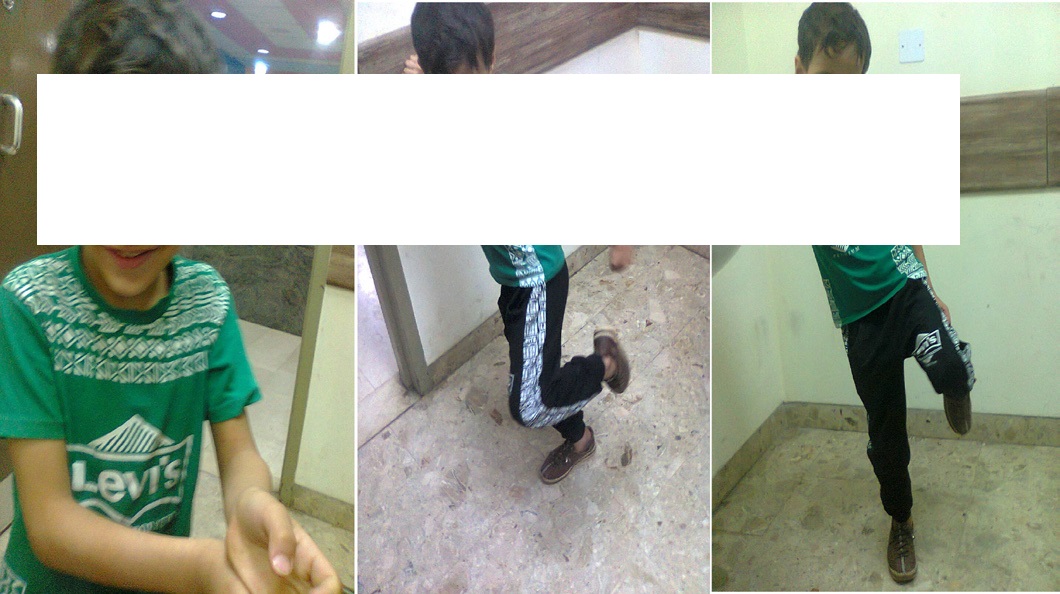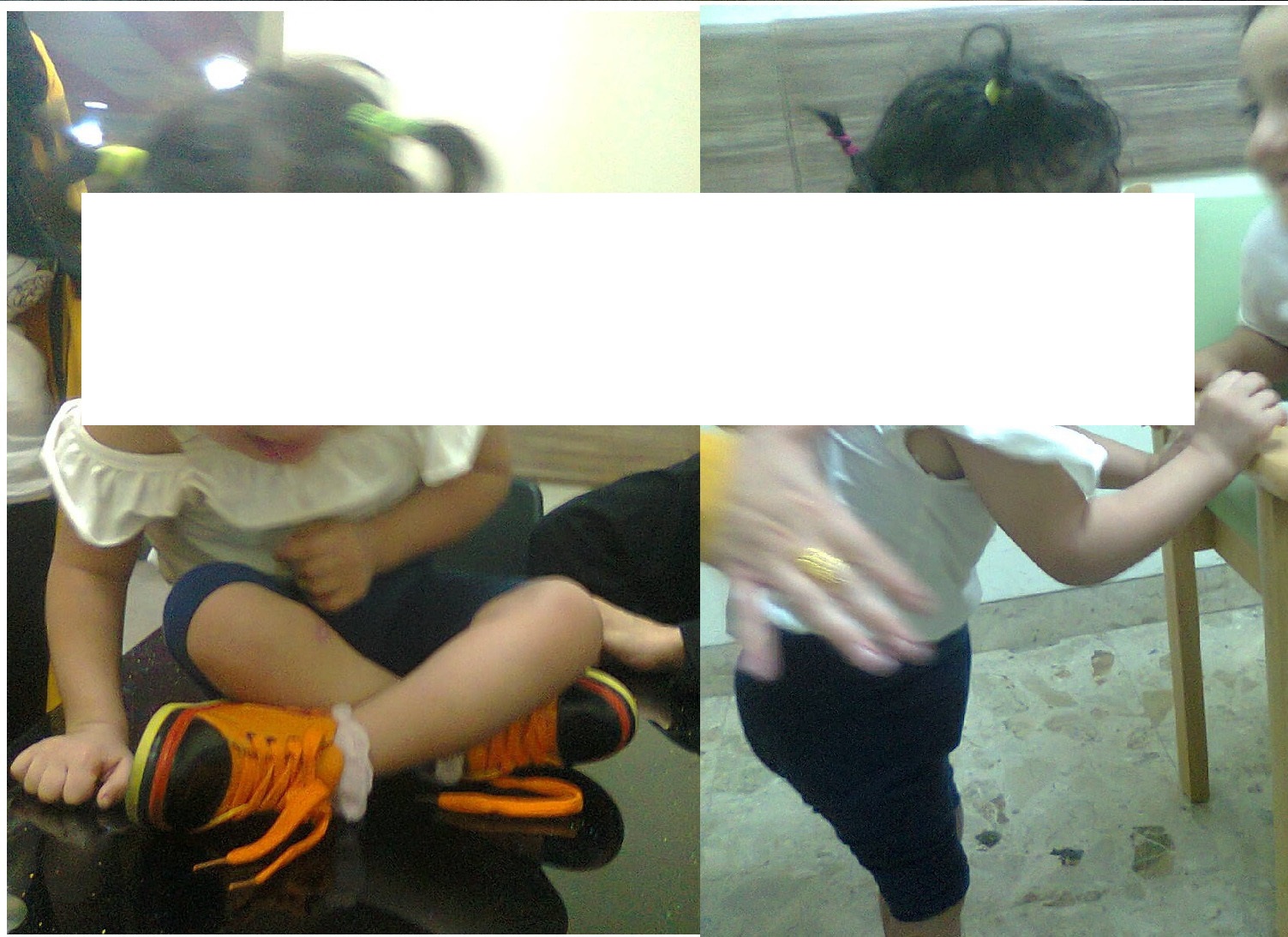
Journal of Clinical Images and Medical Case Reports
ISSN 2766-7820
Case Report - Open Access, Volume 2
Kernicterus: The continuing occurrence of a preventable chronic disabling neurologic condition
Aamir Jalal Al-Mosawi
Baghdad Medical City and the Iraqi Ministry of Health, Baghdad, Iraq
*Corresponding Author : Aamir Jalal Al-Mosawi
Baghdad Medical City and the Iraqi Ministry of
Health, Baghdad, Iraq
Email: almosawiaj@yahoo.com
Received : Dec 22, 2020
Accepted : Jan 15, 2021
Published : Jan 20, 2021
Archived : www.jcimcr.org
Copyright : © Al-Mosawi AJ (2020).
Abstract
Background: Kernicterus is a preventable condition that has become increasingly rare in many countries in the world. It is chronic severe form of bilirubin-induced neurological dysfunction that is associated with a variety of metal and neurological abnormalities resulting from bilirubininduced brain damage mostly in the basal ganglia and during the neonatal period. Despite the condition has been increasingly considered as preventable, it is still seen in some geographic areas where diagnostic and preventive interventions continue to experience failures. The aim of this paper is to emphasize the continuing occurrence of a preventable chronic disabling neurologic condition, and also to warn from the lack of advancement of preventive services in this geographic region.
Patients and methods: Two unrelated patients with kernicterus observed at the Children Teaching Hospital of Baghdad Medical City are described.
Results: The first patient was a seven-year old boy who was seen during the year 2019. He experienced neonatal hyperbilirubinemia of 28 mg/dL, and developed kernicterus presenting with mental retardation associated with delayed motor and speech development despite normal hearing, over-activity and behavioral abnormalities. The second patient was a two-year and eight months old girl who was also seen during the year 2019. She developed neonatal hyperbilirubinemia of 24 mg/dL that was attributed to ABO blood incompatibility, and required an exchange transfusion. The girl was spastic and had delayed speech and development and was unable to sit or stand without support.
The patients were initially treated based on our extensive published experiences with the treatment of various neurologic disorders including cerebral palsy and kernicterus. However, they couldn’t be followed because of the emergence of covid-19 global pandemic.
Conclusion: Although kernicterus has become increasingly rare in many countries in the world, it is still seen in areas with poor preventive services.
Keywords: Kernicterus, Preventable, Iraq.
Citation: Al-Mosawi AJ. Kernicterus: The continuing occurrence of a preventable chronic disabling neurologic condition. J Clin Images Med Case Rep. 2021; 2(1): 1006.
Introduction
Kernicterus is the chronic severe form of bilirubin-induced neurological dysfunction. It is associated with a variety of mental and neurological abnormalities resulting from bilirubin-induced brain damage mostly in the basal ganglia and during the neonatal period. Despite the condition has been increasingly considered as preventable, it is still seen in some geographic areas where diagnostic and preventive interventions continue to experience failures. The aim of this paper is to emphasize the continuing occurrence of a preventable chronic disabling neurologic condition, and also to warn from the lack of advancement of preventive services in this geographic region [1,2,3,4,5].
Patients and methods
Two unrelated patients with kernicterus observed at the Children Teaching Hospital of Baghdad Medical City are described.
Results
The first patient was a seven-year old boy who was seen during the year 2019. He experienced neonatal hyperbilirubinemia of 28 mg/dL, and developed kernicterus presenting with mental retardation associated with delayed motor and speech development despite normal hearing, over-activity and behavioral abnormalities. At the clinic, the boy showed poor cognitive and motor development. He had difficulty in squatting and was unable to stand on one foot for few seconds without support (Figure 1). His cognitive and fine motor skills were impaired, and he couldn’t copy a good circle.
The boy was initially treated based on our extensive published experiences with the treatment of various neurologic disorders including cerebral palsy, mental retardation, and kernicterus [3-8]. Initial treatment included intramuscular piracetam 1 g every third day (10 doses) and oral citicoline 3 ml (300 mg) daily in the morning. However, he couldn’t be followed because of the emergence of covid-19 global pandemic.
The second patient was a two-year and eight months old girl who was also seen during the year 2019. She developed neonatal hyperbilirubinemia of 24 mg/dL that was attributed to ABO blood incompatibility, and required an exchange transfusion. The girl was spastic and had delayed speech and development and was unable to sit or stand without support (Figure 2).
The boy was initially treated based on our extensive published experiences with the treatment of various neurologic disorders including cerebral palsy and kernicterus [3-10]. Initial treatment included intramuscular piracetam 600 mg daily for 10 days followed by intramuscular citicoline 375 mg every other day for one month (15 doses). However, she couldn’t be followed because of the emergence of covid-19 global pandemic.
Discussion
In 1875, Johannes Orth (Figure 3), a German pathologist described the anatomical abnormalities of the brain autopsy of a two-day old neonate who developed severe jaundice shortly after birth. There was an intense yellow staining of the basal ganglia, hippocampus, the third ventricle, and parts of the cerebellum [1].
In 1903, Christian George Schmorl (Figure 4) reported the results of 120 autopsies of jaundiced infants, six of them had the yellowish staining of the basal ganglia which was described earlier by Johannes Orth, and called by Schmorl “kernicterus” [1].
In developed countries like the United States, nationally data showed a declining incidence of hospitalizations with a diagnosis of kernicterus in newborn infants during the period from 1988 to 2005 [11].
During one year period (Februatry, 2018 to February, 2019) thirty six patients with mental retardation (25 males and 11 females) were observed at the neuropsychiatry clinic at the Children Teaching hospital of Baghdad Medical City. One male patient had kernicterus [12].
During nine months period (from March to December, 2019), eighty patients (55 males and 25 females) with mental and developments retardation were studied at the Children Teaching Hospital of Baghdad Medical City. Three patients (Two boys and one girl) had kernicterus [5].
More than a century elapsed since the early descriptions of kernicterus by Johannes Orth and Christian George Schmorl before the emergence of some evidence-based therapies [1,3,6].
Al-Mosawi (2019) described the treatment of a girl with kernicterus who had delayed speech and lacking the balance (coordination) without obvious muscle weakness. She was unable to maintain the sitting posture on a chair for few minutes, and was unable to maintain straight standing posture when supported on chair at all. She had difficulty in holding things. The girl was treated with courses of intramuscular cerebrolysin and intramuscular citicoline. After the first month of treatment, speech development was initiated, and she was saying few words. She was able to sit normally on the chair and maintaining the sitting posture indefinitely. She was able to maintain more straight stable standing posture without holding a chair and with the ability to hold things at the same time indicting improved coordination. She also developed improved ability to hold small things like a pen. After the second month of treatment, the girl was able to stand alone and was making few steps slowly holding furniture. After five months of treatment, the girl was able to stand alone and walk rapidly holding furniture and treatment was not associated with any side effects [6].
Al-Mosawi (2020) described the treatment of a two-year old boy with ataxic cerebral palsy caused by kernicterus associated with delayed speech. Before treatment, the boy had difficulty in sitting without support for more than few seconds and was holding the chair to keep his position. He could stand holding furniture and could stand alone for seconds, but was unable to take any further step without support. The boy was treated with intramuscular cerebrolysin 3 ml every other day (15 doses), and intramuscular citicoline 3 ml (375 mg) every other day. After treatment, the boy was able to sit without support for long time, and could stand without holding anything for long time. The use of intramuscular cerebrolysin and citicoline was associated with some improvement and was found to be beneficial without the occurrence of any side effects [3].
Conclusion
Although kernicterus has become increasingly rare in many countries in the world, it is still seen in areas with poor preventive services.
Acknowledgements
The author would like to express his gratitude for the parents who willingly accepted publishing the photos of their children. Figures 3 and 4 were previously published, but the author has their copyrights.
References
- Al-Mosawi AJ. A novel therapeutic approach for the neurological complications of kernicterus. 1st ed., Saarbrücken; LAP Lambert Academic Publishing: 2018.
- Bousema S, Govaert P, Dudink J, Steegers EA, Reiss IK, de Jonge RC. Kernicterus is vermijdbaar, maar komt nog steeds voor [Kernicterus is preventable but still occurs]. Ned Tijdschr Geneeskd 2015; 159: A8518.
- Al-Mosawi AJ. New therapies for the treatment of ataxic cerebral palsy caused by kernicterus. EC Clinical and Medical Case Reports. 2020; 3(4): 26-31.
- Al-Mosawi AJ. The pattern of mental retardation in Iraqi children.1st ed., Saarbrücken; LAP Lambert Academic Publishing: 2019.
- Al-Mosawi AJ. A Unique experience with mental and developmental retardation: Innovative Medical therapies for idiopathic mental retardation. EC Clinical and Medical Case Reports. 2020; 3(5): 42- 54.
- Al-Mosawi AJ. The novel use of cerebrolysin and citicoline in the treatment of kernicterus. Online Journal of Neurology and Brain Disorders. 2019; 3(1): 208-212.
- Al-Mosawi AJ. New therapies for the treatment of spastic cerebral palsy. Medical Journal of Clinical Trials & Case Studies. 2019; 3(2): 1-9.
- Al-Mosawi AJ. The pattern of cerebral palsy in Iraqi Children. 1st ed., Saarbrücken; LAP Lambert Academic Publishing: 2019.
- Al-Mosawi AJ. Cerebral palsy: A unique illustrated experience. Medico Research Chronicles. 2020; 7(4): 2017-239.
- Al-Mosawi AJ. Cerebral palsy: An illustrated ground-breaking experience. Scholar’s press. 2020.
- Burke BL, Robbins JM, Bird TM, Hobbs CA, Nesmith C, Tilford JM. Trends in hospitalizations for neonatal jaundice and kernicterus in the United States, 1988-2005. Pediatrics. 2009; 123(2): 524-32.
- Al-Mosawi AJ. The etiology of mental retardation in Iraqi children. SunKrist Journal of Neonatology and Pediatrics. 2019; 1(1): 1-9.




